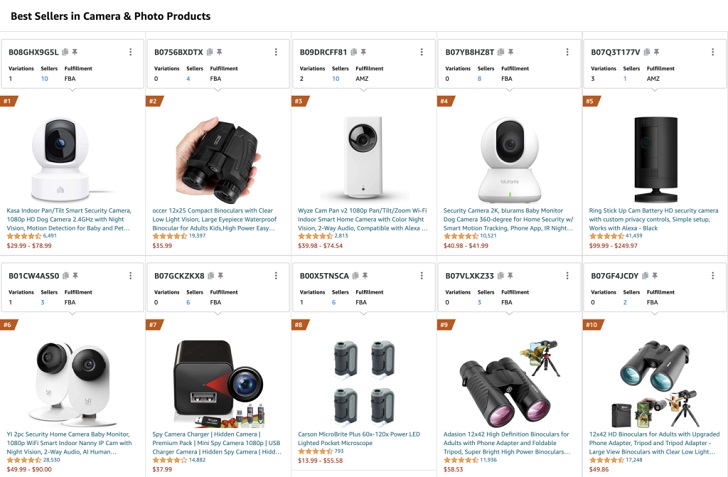Amazon, the world’s largest online retailer, has become a household name and a global powerhouse in e-commerce. Founded by Jeff Bezos in 1994, Amazon started as an online bookstore and has since expanded to offer a vast range of products and services. Below is a detailed guide discussing the journey of this platform:
Early Days of Amazon
Jeff Bezos founded Amazon in 1994 to create an online bookstore. The first book sold on Amazon was “Fluid Concepts and Creative Analogies” by Douglas Hofstadter. Initially, Amazon operated out of Bezos’ garage in Bellevue, Washington, but quickly expanded to a small office in Seattle. In 1995, Amazon.com went live to the public, and the company quickly gained attention for its vast selection of books and competitive pricing.

Recode/ Dan Frommer | Amazon was first launched as a bookselling website
Expansion into Other Product Categories
In the late 1990s, Amazon expanded beyond books and began selling music, movies, and other products. This expansion was a key factor in Amazon’s early success, allowing the company to reach a broader audience and offer a wider range of products. In 1999, Amazon launched its third-party marketplace, allowing other sellers to offer products on the Amazon platform. This move further expanded Amazon’s product selection and helped to establish the company as a leading e-commerce platform.
Amazon’s Acquisition Strategy
Throughout its history, Amazon has been known for its aggressive acquisition strategy. The company has acquired many businesses, from online shoe retailer Zappos to grocery chain Whole Foods. These acquisitions have helped Amazon expand its product offerings and capabilities and gain access to new customer bases. For example, Amazon’s acquisition of Whole Foods gave the company a foothold in the grocery industry, which it has since expanded through its Amazon Fresh and Amazon Pantry services.

Screenshot/ Amazon | Amazon is the first, and only, marketplace to protect customers in third-party product liability cases
Amazon’s Digital Transformation
In addition to its expansion into new product categories, Amazon has also been at the forefront of the digital transformation of retail. The company has invested heavily in technology and infrastructure, from its massive data centers to its fulfillment centers and delivery networks. Amazon’s focus on innovation and efficiency has allowed the company to offer fast, reliable delivery and innovative products and services like Amazon Prime and Amazon Web Services.
Amazon Prime
Amazon Prime, a subscription service that offers free two-day shipping, streaming of movies and TV shows, and other benefits, has been a significant driver of Amazon’s success. Prime has helped establish Amazon as a trusted and reliable retailer, driving customer loyalty and repeat business. According to a Consumer Intelligence Research Partners survey, Prime members spend an average of $1,400 per year on Amazon, compared to $600 for non-Prime members.

Recode/ Dan Frommer | Amazon Web Services’ infrastructure caters to thousands of enterprises in 245 countries and territories
Amazon Web Services
Another key factor in Amazon’s success has been its cloud computing platform, Amazon Web Services (AWS). AWS was launched in 2006 and has grown to become the leading provider of cloud infrastructure services. AWS offers a wide range of services, including computing power, storage, databases, and tools for machine learning and artificial intelligence. AWS has been a major source of revenue for Amazon, accounting for over 10% of the company’s total revenue in 2020.










